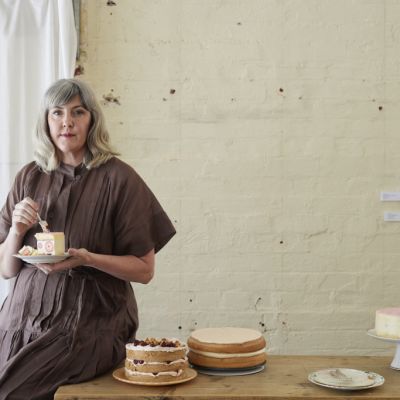At home in Port Melbourne with Daughter in Law's Jessi Singh
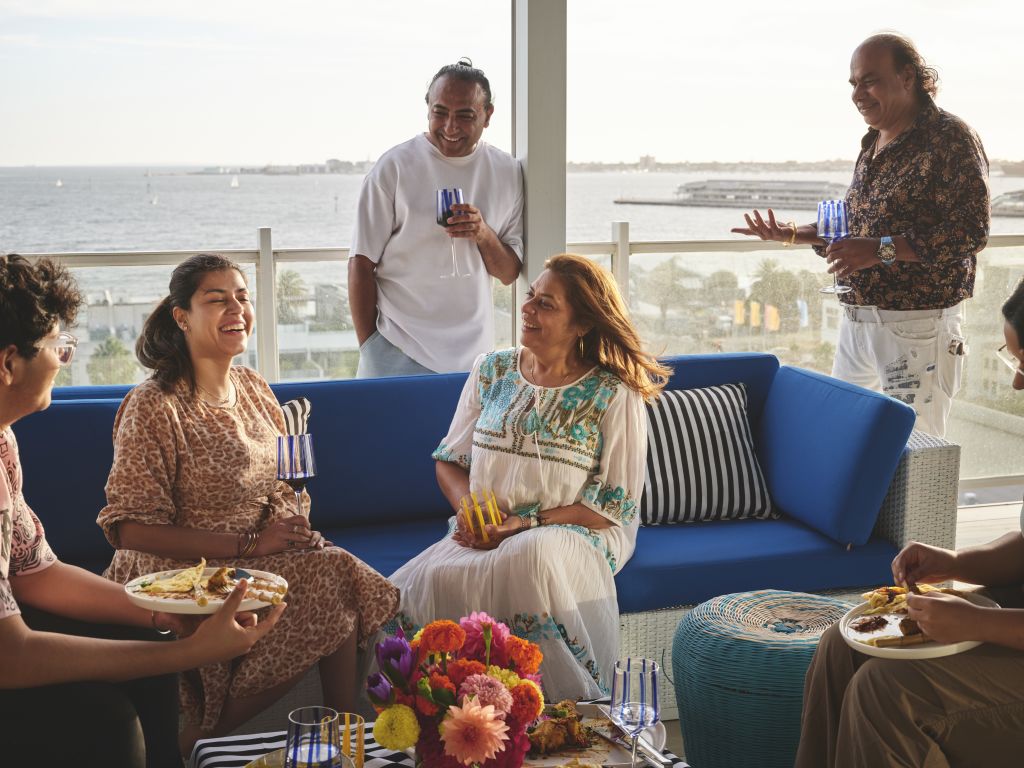
Palm trees dotted along a beachside promenade. Schmick harbourside apartments. Boats in the distance. A gleaming Port Phillip Bay. These are the sweeping views from an upscale penthouse in Port Melbourne. It’s a spectacular place to meet chef and restaurateur Jessi Singh and his extended family.
Singh is known for his mod-Indian diners – he was the original owner of Horn Please, opened celebrated spots in New York and California, and currently runs a clutch of Australian restaurants including Daughter in Law in the CBD.


While the penthouse is not Singh’s residence – it belongs to his Uncle Harry – it’s a place where the entire family feels at home. Dubbed the “party house”, it’s where Singh comes for celebrations, casual family get-togethers and Uncle Harry’s “trademark” annual Diwali party (which hosted 140 people last year).
“Uncle Harry is larger than life and loves hosting – he’s put a full commercial kitchen and bar, and an entire rooftop, in his house,” Singh tells Broadsheet over the phone, days before we visit.
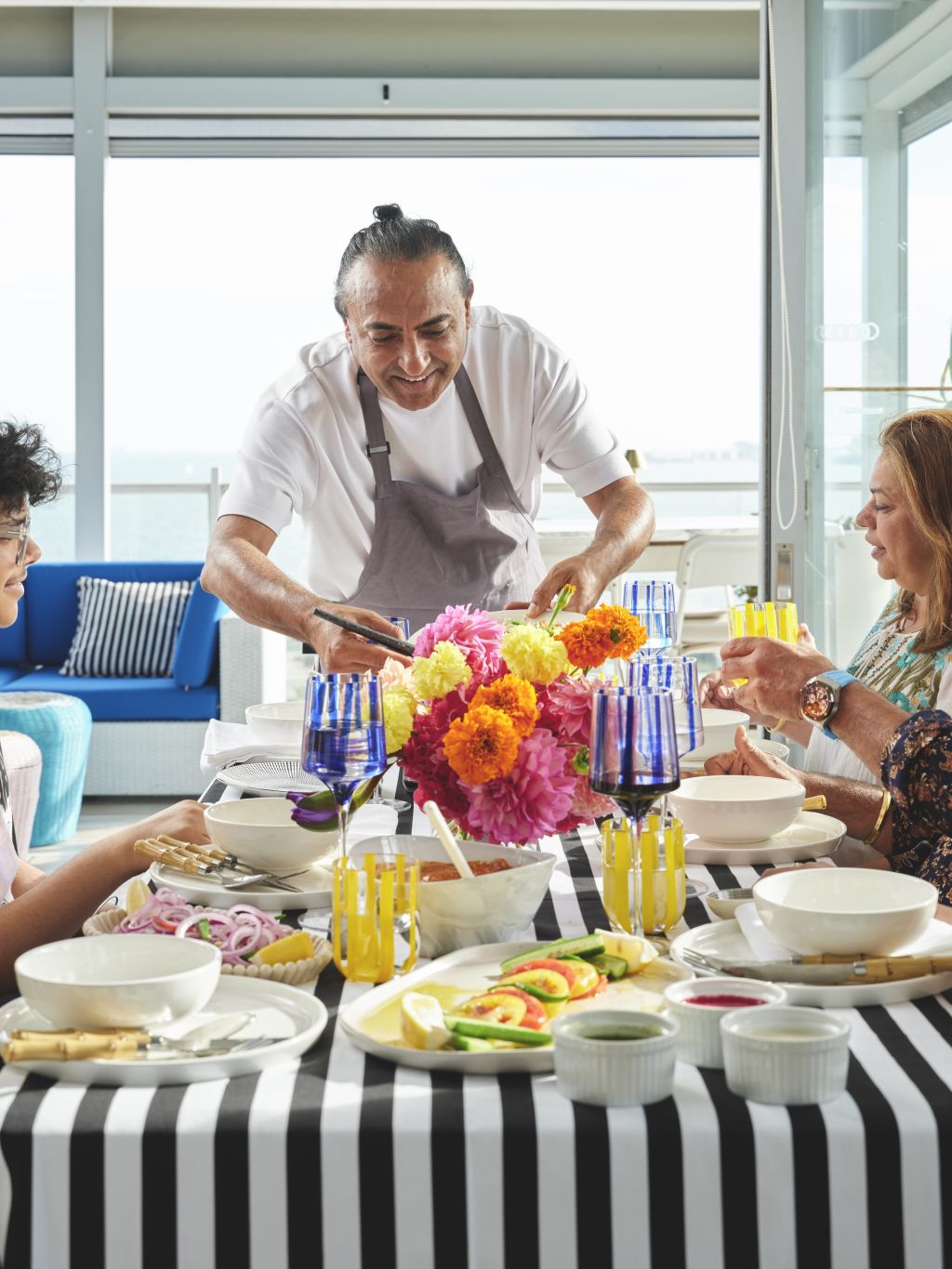
Entertaining and spending time with family and friends is something Singh holds near and dear. “As an immigrant family, we’re living a hard life here and everyone’s so busy, but over the years we’ve developed a structure where at least a couple times a month we catch up, sit together, eat and cook so we stay close to each other,” he says. “There’s such comfort to the soul and spirit when you meet and see your loved ones face to face. It’s very meaningful to me.”
The get-togethers were an important tradition growing up, Singh says, and a way to keep the children in his family connected to their cultural roots. “We’ve adopted it from our parents and our uncles and aunties, and now we’re in our forties and fifties so we’re continuing to adopt the same thing for the next generation.”
When Broadsheet visits the Port Melbourne home, Singh is busy prepping in the kitchen before guests arrive for a small family dinner. The chef marinates freshly bought Western Australian prawns (with paprika, Kashmiri chilli powder, green mango powder and pomegranate seed powder) before firing them up in a 70-kilogram charcoal tandoor oven – yes, the place is fitted out with two tandoors and commercial deep fryers.
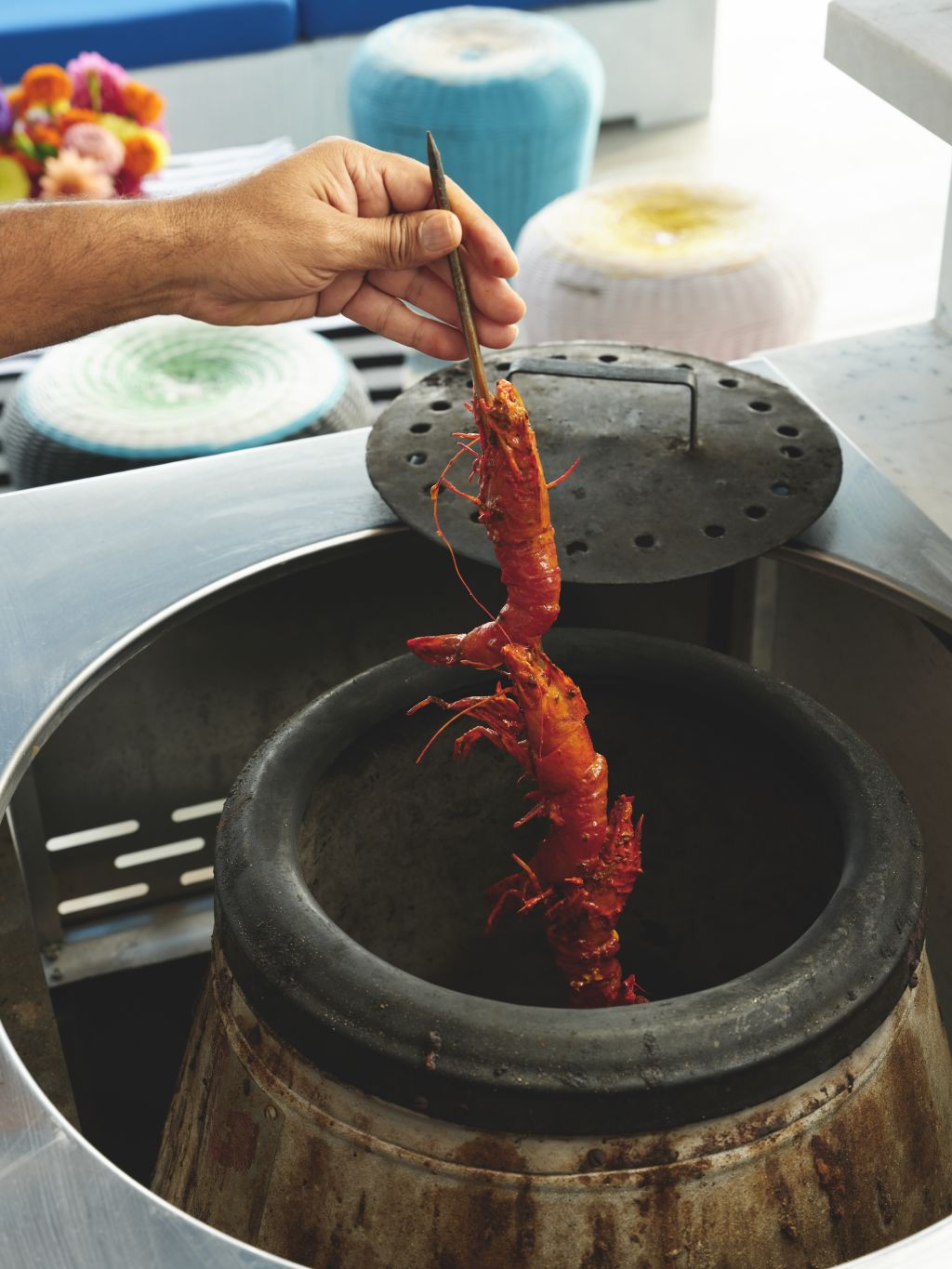
It’s one of Singh’s signature dishes, along with his coveted seafood platters. “That’s always a big demand in my family. People asking me, ‘Is there any good seafood around and can you get some and bring it over for me?’”
Also on the menu for tonight: palak paneer, butter chicken, coconut vegetable curry and Singh’s special “very slow-cooked full five-day process” dal makhani – a dish that everyone looks forward to, according to Uncle Harry.
As the rest of the guests arrive, there’s much chatter and laughter. But for Uncle Harry, the first order of business is whisky. Today’s pick: Indri – a single-malt Indian-made bottle.
“I see from time to time on social media they post, ‘We all have that one uncle that puts a glass of whisky on their head and starts dancing out of nowhere,” Singh laughs, explaining an Indian tradition that’s become an internet meme. In the chef’s family, Uncle Harry leads the way.
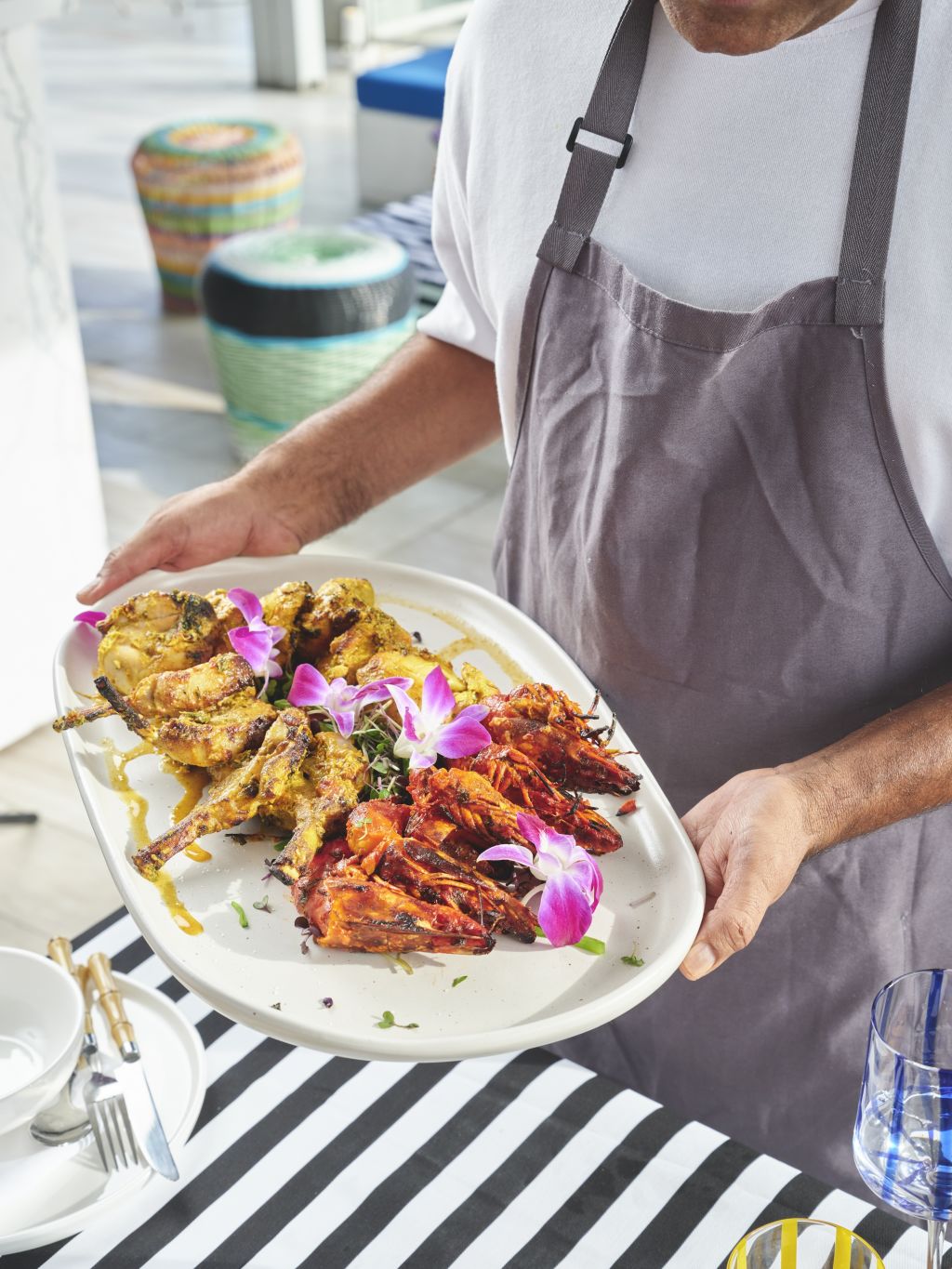
At larger family gatherings, Singh isn’t the only one in the kitchen. Uncle Harry will take time out from carousing to plate his famous tandoor-cooked lamp chop kebabs. Then there’s Aunty Sonia’s potato-stuffed bread – a personal favourite for Singh.
There’s at least one family gathering a month, Singh says, but not all of them demand an extravagant smorgasbord. Often casual get-togethers involve what Singh calls “sada khana” translating to “simple soul food” in Punjabi. “It takes a lot to cook Indian food, man. It’s not an easy process and the shopping list is big. Sometimes in our family, we have this ritual, ‘Alright we’re just going to do sada khana – just roti, pickle and yoghurt’.”
But when Singh is hosting in his own home, it’s anything but simple. Guests enjoy a welcome glass of bubbles, a curated ’70s Indian disco playlist, bright flowers (marigolds and dahlias, to be specific) and lots of dancing.
The chef laughingly describes himself as “the life of the party” and equally “the cook, the dishwasher and the planner”. It’s a big role, but a familiar one, he says.
“Because I worked in hospitality all my life, it comes very natural to me. I host people [in] my restaurants to earn a living, and if I don’t do the job right, they’re not going to come back. So, I have adapted to that even in my personal life with hosting, cooking and sharing food.”
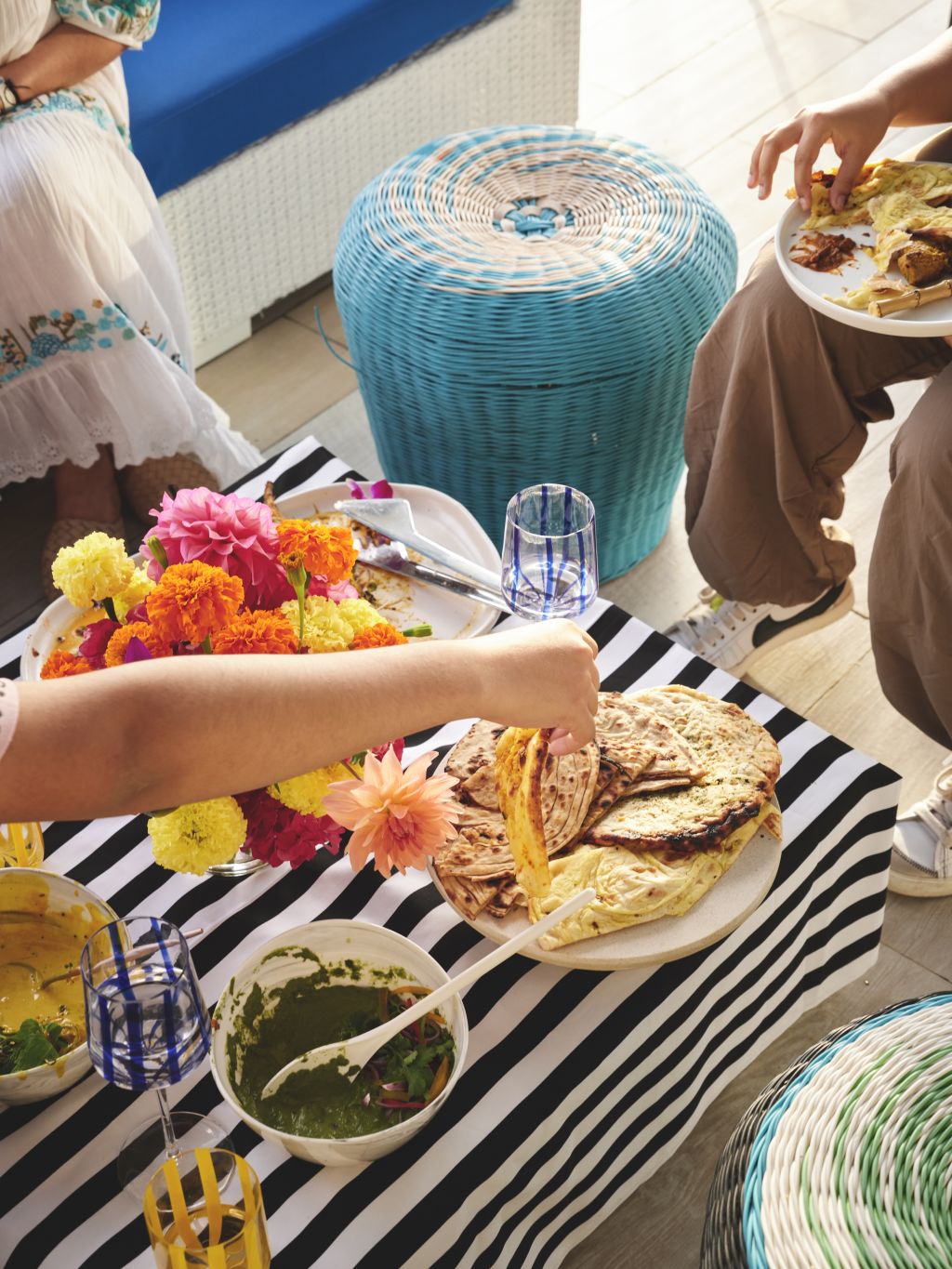
Growing up in a traditional Sikh family in Punjab, India, connection to food and community is something Singh learned from a young age. Back home the clan had a large joint family kitchen – helmed by his grandmother – which could feed 40 or so seasonal workers who came to help with the harvest on the family farm. “I was always super interested in my grandma’s kitchen. They used to push me out like, ‘You’re a boy, what are you doing here, get out’. But I would always sneak back in,” he recalls.
Cooking for the masses is also nothing new to the chef. During his childhood, Singh remembers helping cook for thousands of people at the local Sikh temple every Sunday. Even now, it’s become a weekend ritual he continues to follow.
“Growing up in a big family, and in the temple, you’re dealing with a lot of different people – lots of different hands and minds coming together in the kitchen cooking. So, I developed these amazing leadership skills very early on: how to get people organised, how to get the ingredients and get it done.”
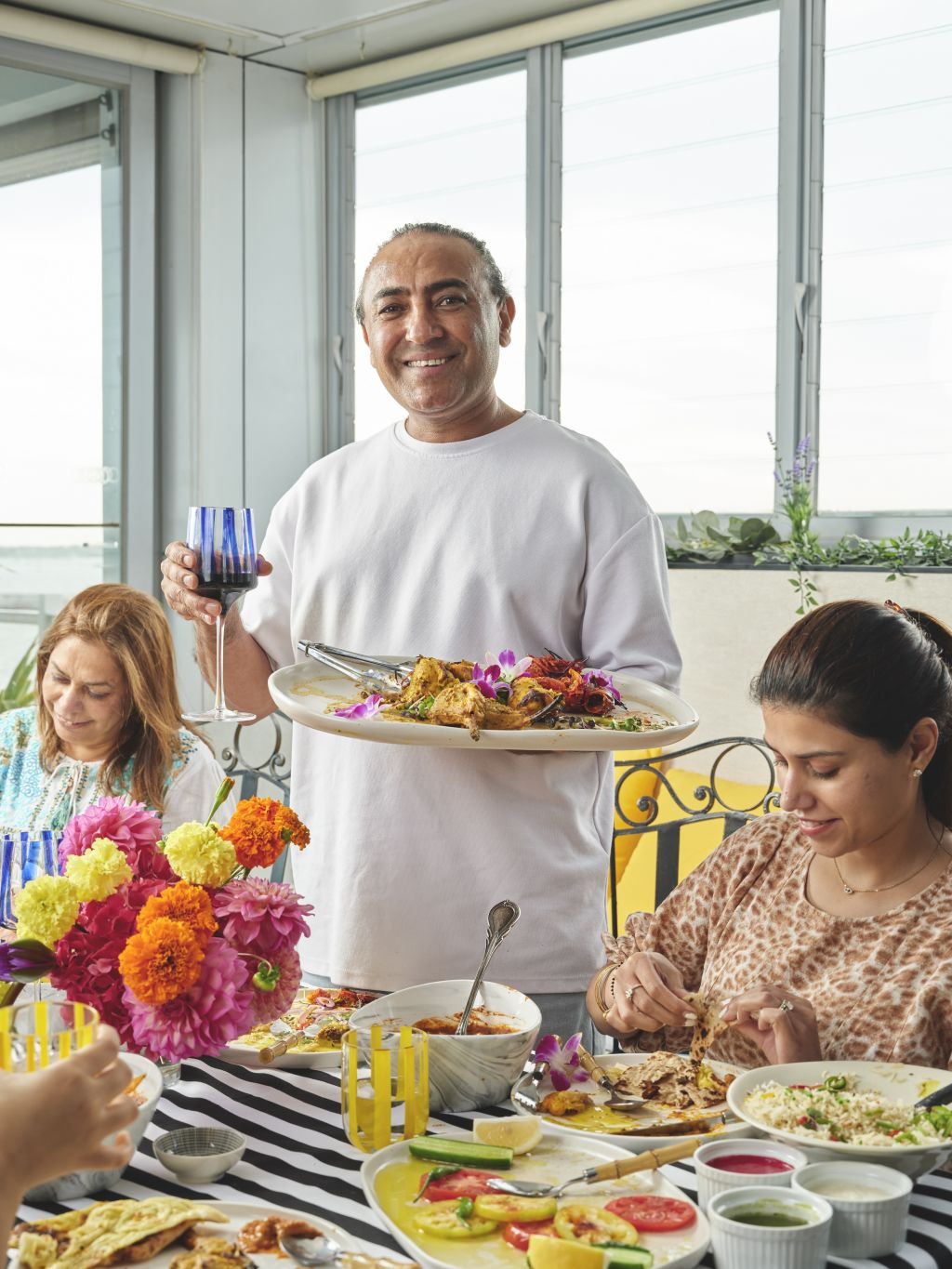
It’s been a big few months for Singh. On top of his regular portfolio – the Melbourne diner, a Daughter in Law outpost in Adelaide, plus Pinky Ji in Sydney – the chef and restaurateur brought his “unauthentic Indian” food to the Australian Open earlier this year. His diner was also a part of Adelaide Fringe’s five-week program, which involved Singh travelling to the city each week.
Coming up next, Singh is due to open two new Melbourne restaurants: Aanya, a 20-seat Indian fine diner in Collingwood and Bibi Ji, a more casual Lygon Street spot in the former Cafe Notturno.
With so much on his plate, you’d think family get-togethers might fall off the schedule. But a hectic work life is all the more reason to catch up and check in, he says.
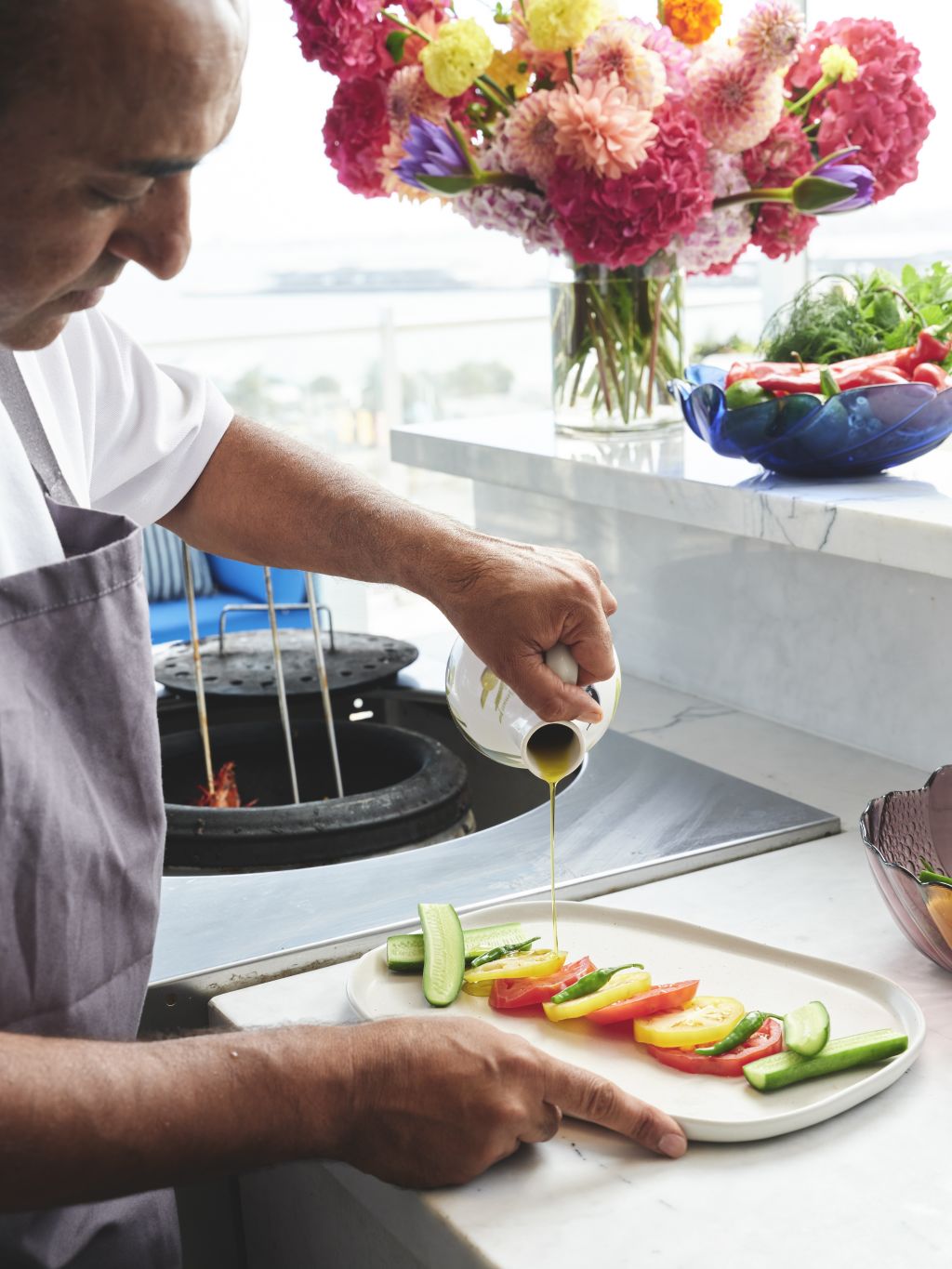
“People ask me, ‘Don’t you want to just sit and have a day off?’ I’m like, no man, I find comfort and joy in having you come over. I don’t want to have a day off and just keep going out to someone else’s restaurant – that’s just normal hospitality life.”
Right now, Singh and his guests sit chatting on the penthouse balcony, enjoying their meal and the view. But it’s more than just an incredible vista, he says.
“The view represents for us our hard work. We made it, we worked hard to get here and we’re amongst the most beautiful locations where we can sit, eat, sleep and drink. And that is a comfort that I think only immigrant families can understand.”
This article first appeared in Domain Review, in partnership with Broadsheet.
We recommend
States
Capital Cities
Capital Cities - Rentals
Popular Areas
Allhomes
More

